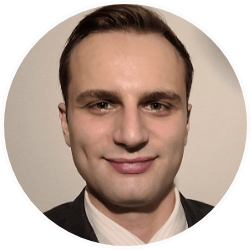 Part of the Oxford Instruments Group
Part of the Oxford Instruments Group
Expand
Collapse
Atomic scale processing means wafer scale processing with control at the atomic scale. Control of surfaces and interfaces becomes increasingly important to achieve the desired material properties, thickness uniformity, and surface smoothness.
We are delighted to have two special guests for the "Surface Smoothing at the Atomic Scale" Webinar from the University of Illinois and the Eindhoven University of Technology.
Julian Michaels will share knowledge about Bias-Pulsed Atomic Layer Etching (BP-ALE) which offers the same level of atomic precision as conventional ALE at approximately ten times the speed. Nicholas Chittock will discuss how combinations of atomic layer deposition (ALD) and isotropic ALE can be used to understand and achieve surface smoothing in 3D structures. Oxford Instrument’s atomic scale segment specialist, Dr Harm Knoops, will host and provide a brief introduction.
Join the webinar and learn more about surface smoothing at the atomic scale.


Introduction to the webinar
Plasma Atomic Layer Etching (ALE) offers unparalleled precision when etching semiconductor material because it removes single atomic layers in each controlled etch cycle; however, the regular purging of reagent gases substantially slows its etch rate, limiting the widespread applicability of ALE processing. Bias-Pulsed Atomic Layer Etching (BP-ALE) offers the same level of atomic precision as conventional ALE at approximately ten times the speed. It eliminates the purging steps in a cycle and instead relies solely on pulsing the plasma DC bias. BP-ALE has been applied to a variety of wide bandgap semiconductors and has been shown to smooth the etched surface significantly through atomic force microscopy. This talk overviews BP-ALE, highlighting its differences to ALE, and seeks to predict the future materials for which it is compatible.
As nanoelectronics pushes towards ever smaller technology nodes, control of surfaces and interfaces becomes increasingly important. One way to control the surface quality is to implement atomic layer deposition (ALD) and etching (ALE), where smoothing has been observed experimentally. However, the mechanism which drives smoothing was not understood for both ALD and ALE. In this talk we will discuss a model developed to predict the rate of smoothing for ALD and ALE of Al2O3, showing good agreement with experimental data and elucidating the mechanism by which smoothing occurs. By studying surface smoothing from ALD and ALE interesting avenues for combined processing became apparent, which enabled smoother films than can be achieved by either technique individually.

Julian Michaels
Electrical and Computer Engineering PhD candidate at the University of Illinois at Urbana-Champaign
Julian Michaels's work focuses on developing novel nanofabrication techniques for quantum and optical devices.

Nicholas Chittock
Applied Physics PhD candidate at the Eindhoven University of Technology
Nick Chittock’s work focuses on the development of plasma based isotropic atomic layer etching (ALE) processes for the fabrication of nanodevices.